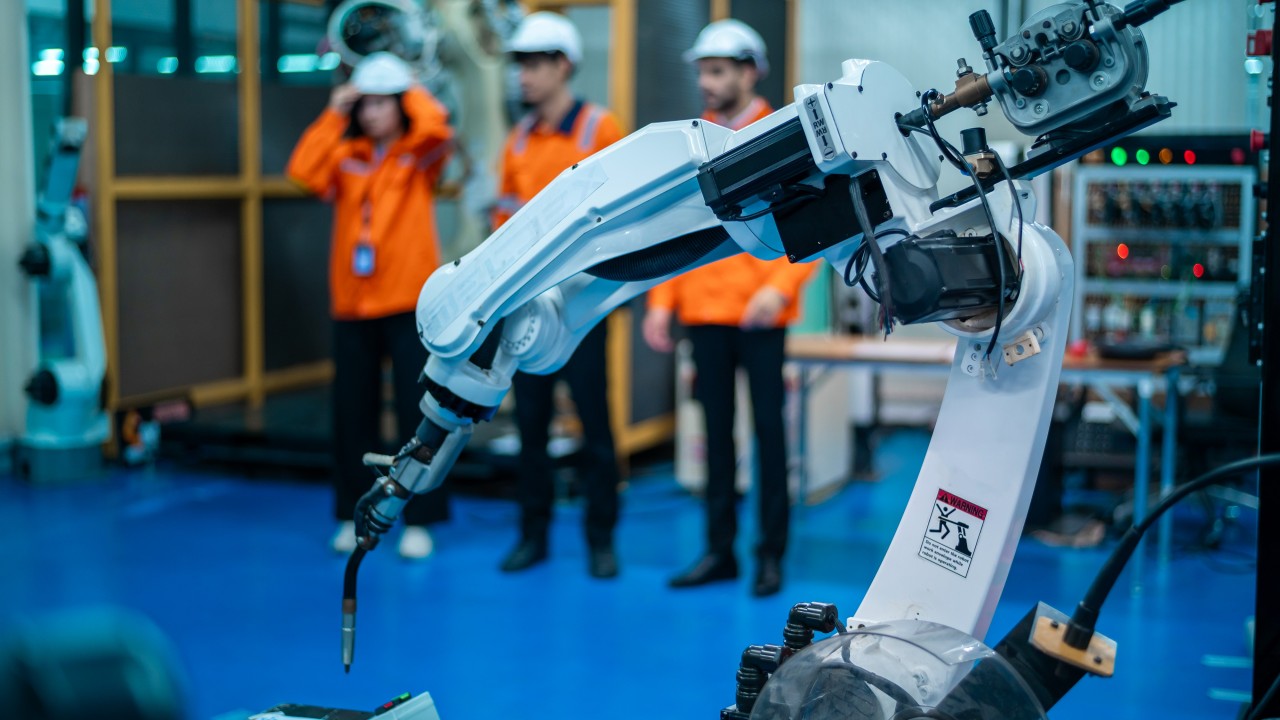
What is Machine Learning? — A high level overview of machine learning and how you can start using it.

What is Machine Learning?
Machine learning (ML) is the development of computer systems that allows them to learn from data and improve their performance without explicitly being programmed to do so.
Essentially, ML is the backbone behind the increasingly capable and intelligent AI models being used in our day-to-day lives like Claude and ChatGPT.
ML vs AI: are they different or one in the same?
ML is often confused with artificial intelligence (AI).
Technically speaking , ML is a subset of AI, meaning that ML is a field under the large umbrella of artificial intelligence.
While AI refers to any machine or program that acts with intelligence—from pre-coded NPC bots in video games to DeepSeek—ML is the field that enables the more powerful and advanced AI, like GPT, to learn and develop.
For example, ML is teaching a computer to recognize if an image is a dog or a cat, while AI is the actual program that does the recognition. As such, ML has become increasingly important in our day-to-day lives, and its capabilities continue to grow.
How does ML work?
At a higher level, machine learning is essentially training a machine to guess.
Although it doesn’t sound incredible , that’s exactly what GPT, Sora and Copilot are doing—guessing very, very precisely.
This ability to predict is based on the training of these AI models. After building a model, machine learning starts with us gathering data to train the model.
We use huge amounts of data to coach these models , often even terabytes!
Depending on the type of model, the data will vary . For example, to train a large language model (LLM) like ChatGPT, we would collect vast amounts of sentences, words, conversations, and other text data. whereas an image classification model may use tens of thousands of distinct images.
Each model’s magnitude is often gauged by its parameter count. For instance, OpenAI’s GPT-3 boasts nearly 175 billion parameters (nearly 45 Terrabytes of raw text data), BLOOM with 176 billion parameters, and Meta’s LLaMA offers the choice of four sizes: 7B, 13B, 33B, and 65B parameters.

After gathering this data, we feed it into the model. The predictions that the model will produce after inputting our data will be completely random in the beginning .
However, after each chunk of data that is plugged in, we’ll use an algorithm (based on a bunch of awesome calculus!) called backpropagation to tweak the model and optimize its performance for better guesses.
Basically , after each chunk of data is plugged in, the backpropagation algorithm iterates backwards through the models’ guessing mechanisms and upgrades them. We will then repeat this process dozens of times until our model can finally guess at an adequate accuracy.
At first, our model will perform very poorly, randomly guessing the right answer. Over time however, by improving the model with each change of data and by utilizing the backpropagation algorithm, we can achieve more dependable and accurate predictions.
For classification models (classifying if a sentence is happy or sad, or classifying if an image is a dog, cat, or bird), the model will be stronger in predicting the right class of the input. For generative language models, the system will be better at predicting which words to respond to the user with.
Often times humans are guiding the training to ensure that it is going in the right direction.
This is an oversimplified explanation of what Machine Learning is and how it works but it should at least demystify the seemingly magical powers of LLMs or AI video generators.
How can I use ML in my business?
ML and AI are useful.
These technologies enable dynamic and highly efficient tools—like customer service agents, ad generation, translation, sentiment analysis, content creation and much more that can be leveraged almost instantly.
Due to their “intelligent” nature, they have the capabilities to tackle more complex tasks with more efficiency than regularly coded tools could.
For example, at a large scale, ML can be used to analyze medical scans for diagnosis or foretell stock fluctuations based on satellite and GPS data from cargo ships.

The Capabilities of ML
Beyond chatbots for everyday use, ML has a plethora of capabilities that almost seem otherworldly. Recently, a team of astronomers from the University of Geneva, the University of Bern, Disaitek, and the NCCR PlanetS Switzerland were using image recognition to discover new planets. This team applied ML techniques, like using an artificial neural network to identify two new planets, Kepler-1705b and Kepler-1705c, that had been missed.

Along with this, AI is being used to analyze social media activity and behavioral patterns alongside ML-based facial and voice identification to detect criminal activity.
Seeing the outstanding capabilities of ML, you may wonder how you can start using ML for yourself the following is a list of a few different types of AI and specific use cases for business or other organizational jobs:
- Text generation: Storytelling, content creation, script writing
- Information retrieval: Q&A, summarization, fact-checking
- Code generation: Python, JavaScript, and other languages
- Language translation: Multilingual support varies per model
- Chatbot: Context-aware conversations and assistance
- Data analysis: Interpreting spreadsheets, summarizing trends, generating insights
- Email and document drafting: Professional communication, reports, memos
- Marketing: Ad copy, slogans, social media captions
- Simulation: Roleplaying behavior, testing dialogue, scenario planning
- Tutoring and education: Explaining concepts, solving problems, mock quizzes

Working with an LLM
To work with an LLM, there are various methods depending on your use case. To simply interact with an LLM, closed-source models like ChatGPT, Gemini, or xAI offer instant access. Start by creating an account, opening a chat window, and start prompting. They handle everything in the cloud, making them ideal for casual users or those new to AI.
However, to use an LLM in a software project, many opt to use APIs to directly interact with LLMs from their code. Here, services like LangChain provide free LLM models that a programmer can use in a business application, whereas companies like OpenAI provide paid APIs for higher quality models. To use these services, make an account on their developer platforms and create an API key. This key can be used in your code to prompt the LLMs and use their responses in your projects.
LLM and their use cases
LLMs are useful for service, translation, and other tasks that require quick responses to people. At a smaller scale, LLMs can be used as customer service assistants, internal company assistants, meeting summarization, or blog post writing. At a larger scale, LLMs (using reasoning and/or the capabilities of an AI agent) can be used to make trades off of information that it learns from the internet, or detect fraudulent patterns in user activity.
LLMs can also be used in a specific software build called an RAG architecture, where the LLM can retrieve crucial and relevant information that it can use to generate a higher quality response. These RAG architectures are particularly useful for internal company customer service bots, or outgoing outreach bots, where specific company information or outreach info will elevate the LLM response. LLMs may also be fine-tuned to specific tasks.

AI Agents and their use cases
AI agents take generative AI to the next level. Instead of simply doing the task they were programmed for , agents are dsigned to work on your behalf, autonomously performing tasks in your place. Agents are capable of doing multiple different duties , as well as being customized for a specific chore. For instance , a personal assistant that drafts emails and recaps meetings for you to free up time for you on a busy day.
Working with an AI agent
To create an AI agent, you can use services like Cohere, which provide a simple interface to build AI agents. You can also use premade agents like Microsoft’s Copilot which comes with Windows 11, but custom agents that are built for certain tasks generally perform better on those tasks. Agents are also perfect for customer service tools or as an assistant for employees. They have the ability to perform multiple types of actions that users may need, compared to an LLM which can only respond with text.
Image and Video Generation: How can
you try it?
For completely different uses than LLMs and Agents, image and video generative AI can be used in place of stock footage, to create advertisements for creating content. AI video generation can be used to create high-quality videos without using expensive equipment or actors and with no video editing skills, while AI image generation helps craft your ideas without needing to photograph or scour the internet for the right stock photo. These tools are also useful if you have footage that is almost perfect, but needs to be slightly modified, saving time .
Working with Image and Video Generation
To generate images or videos, you can use services like Pika or Kling. These tools have the ability to create videos and images from text prompts or photo references , as well as change still images into videos.
The Future of Business Is Powered by Machine Learning
Machine learning is no longer just a futuristic concept—it’s a practical, powerful tool that’s transforming industries right now. Whether it’s automating internal workflows, enhancing customer experiences, or generating intelligent insights, ML can give companies a competitive edge and the ability to scale more intelligently.
At GAME PILL , we specialize in creating custom simulations and AI-powered systems using tools like Unity 3D, ML agents, and LLM integrations. If you’re exploring how to bring machine learning into your organization—whether for prototyping, training, internal operations, or product development—we’re here to help or learn together.
#AI #ML #ArtificialIntelligence #MachineLearning #LLMS #LanguageModels #GenAI #GenerativeAI #OpenAI #GPT
https://docs.cohere.com/v2/docs/building-an-agent-with-cohere
https://www.youtube.com/watch?v=i_LwzRVP7bg
https://www.canva.com/features/ai-video-generator/
https://www.unige.ch/medias/en/2021/decouvrir-des-exoplanetes-grace-a-lintelligence-artificielle





